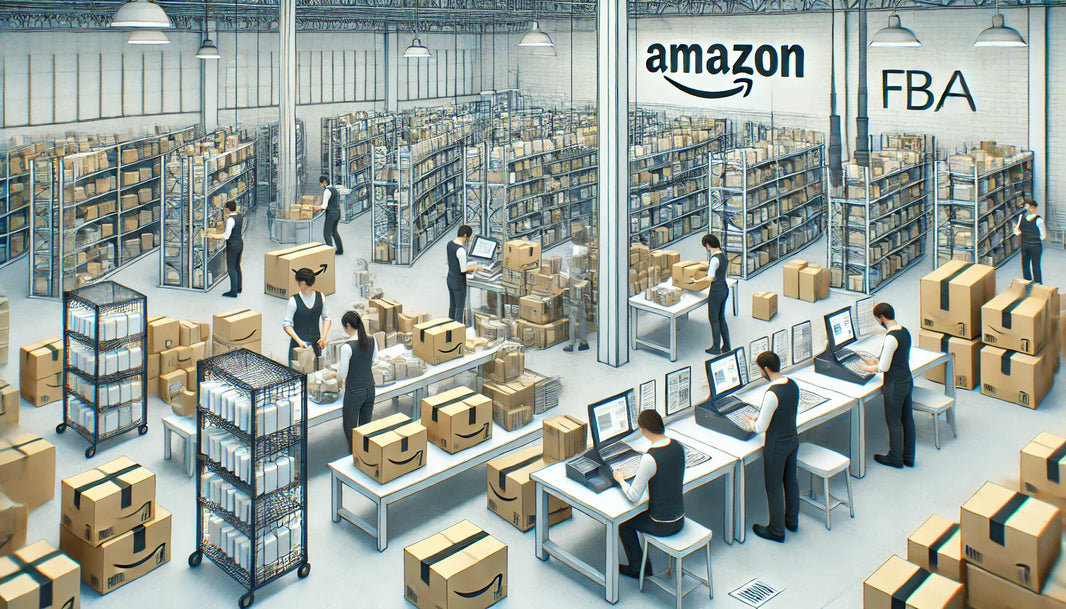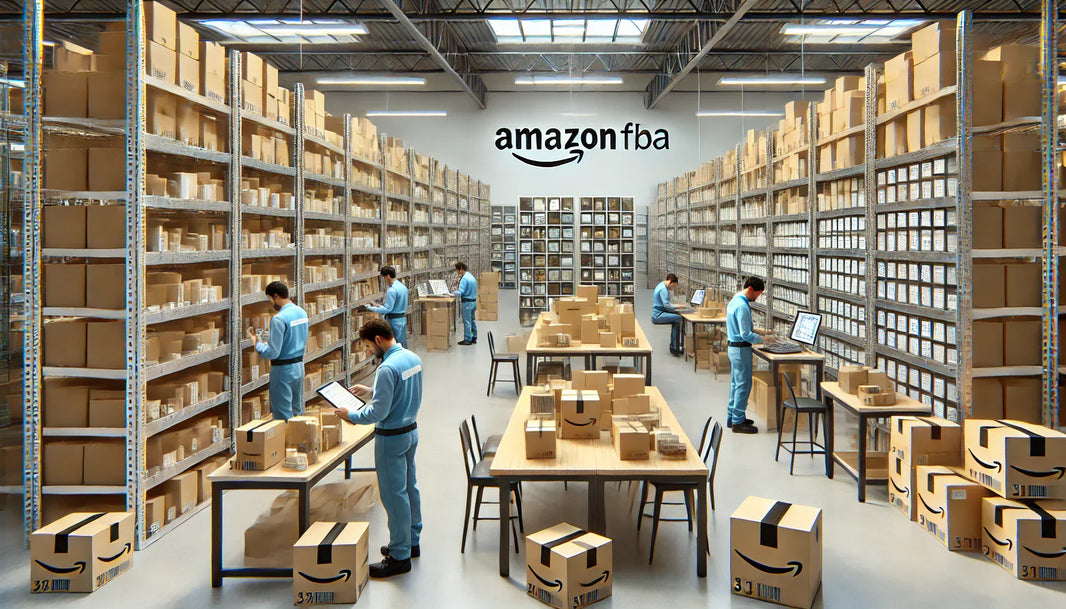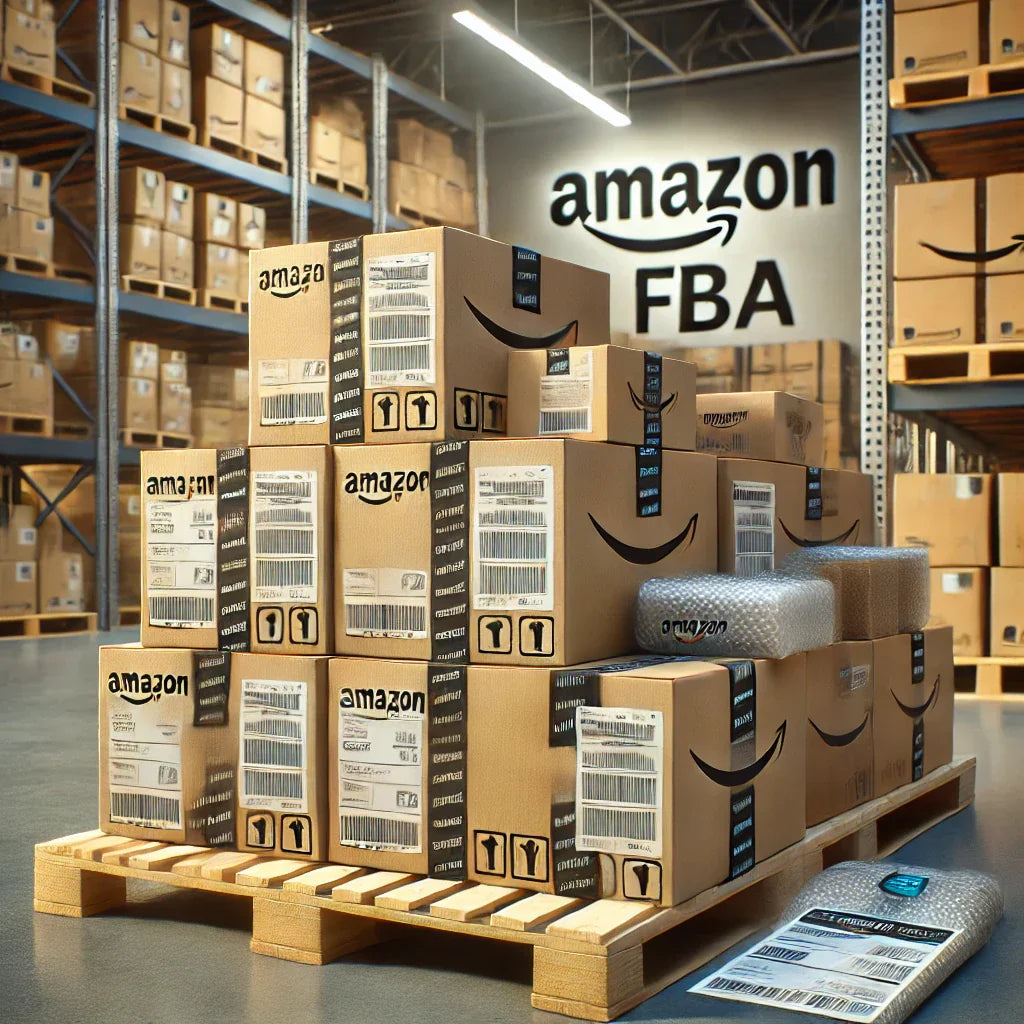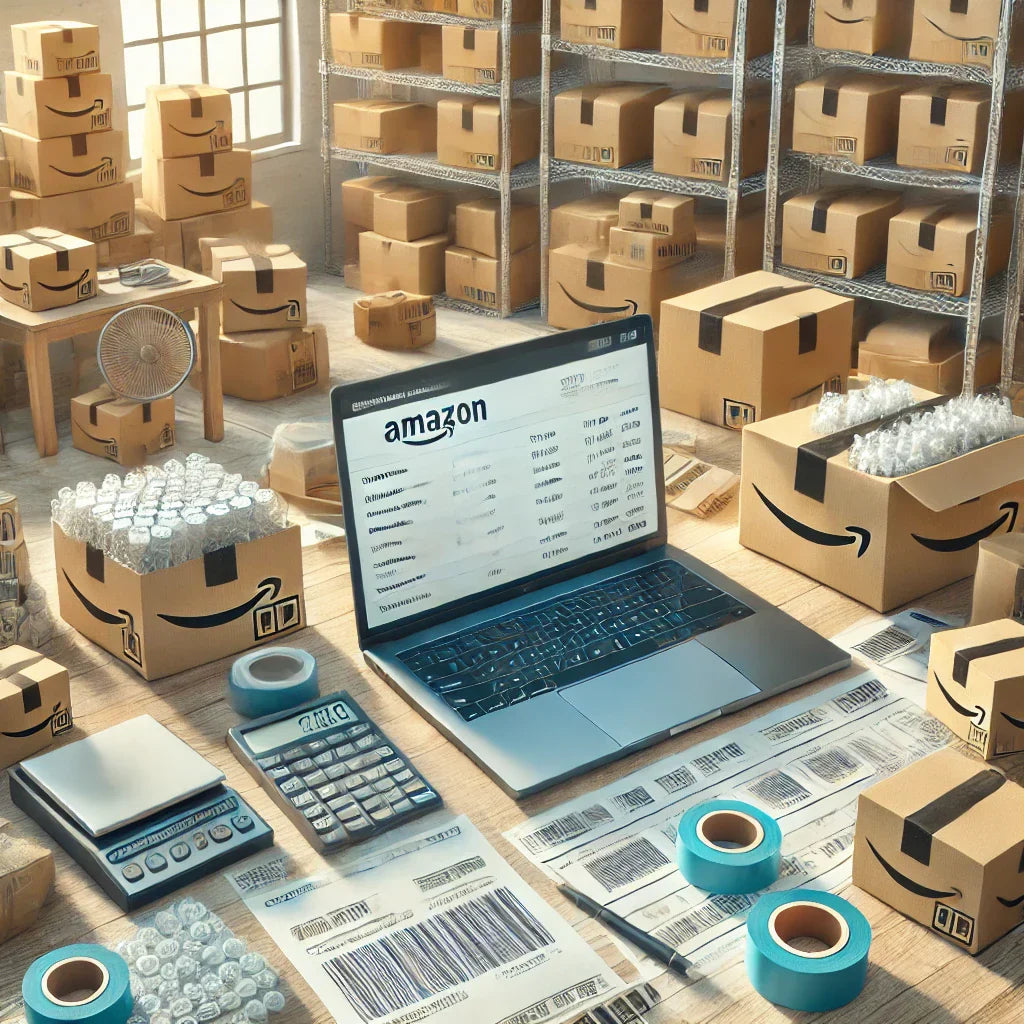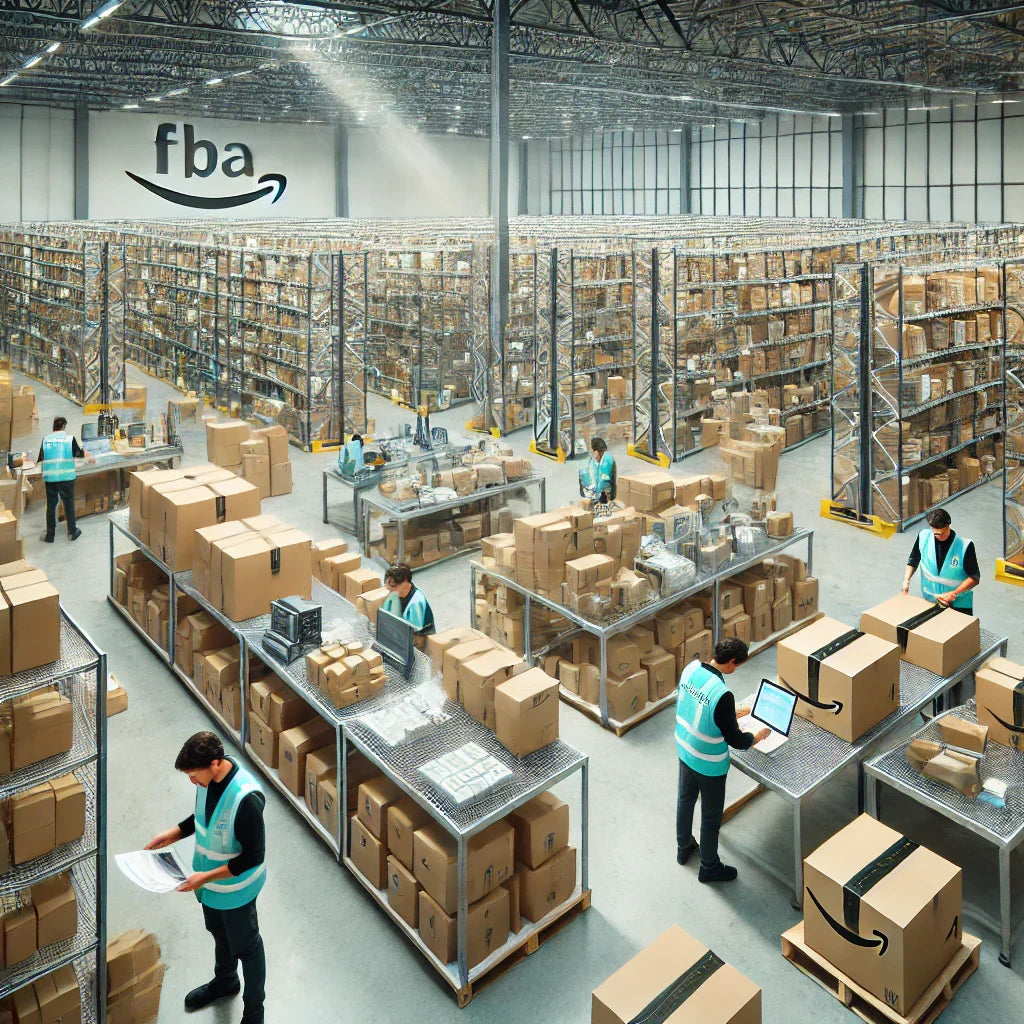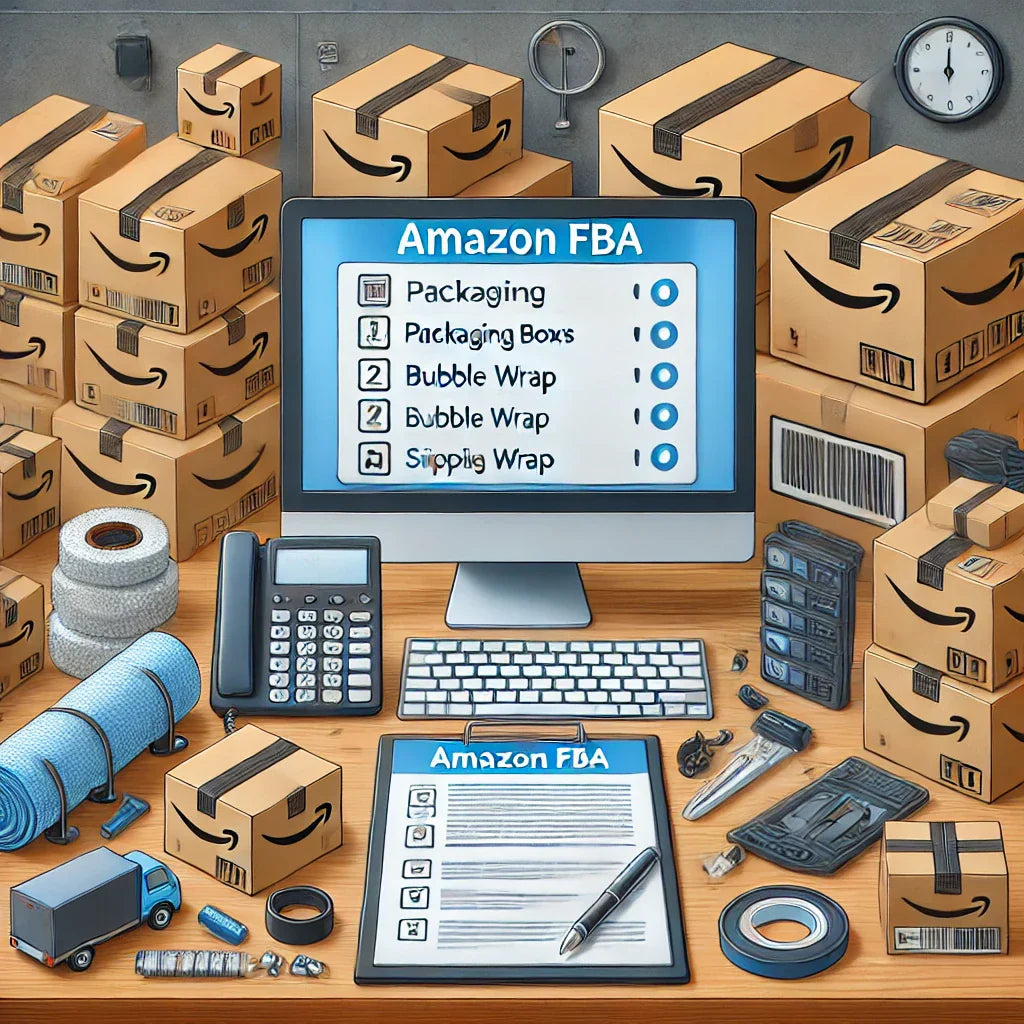The distribution industry, a critical backbone of global supply chains, is undergoing a seismic shift propelled by rapid technological advancements. From warehouse automation and real-time data analytics to innovations in 3PL (third-party logistics) and wholesale distribution models, technology is redefining the efficiency and agility of the sector. In an era where consumer expectations are evolving and competition remains fierce, the integration of cutting-edge digital tools has become not just a strategic advantage but a necessity. As we explore this transformation, we will examine how these technologies are revolutionizing processes, enhancing service levels, and shaping the future landscape of distribution.

The Rise of Automation in Warehousing
Automation is the cornerstone of the technological revolution in warehousing. Automation technologies, such as autonomous mobile robots (AMRs) and automated guided vehicles (AGVs), are transforming how warehouses operate. They optimize the movement of goods, reduce human error, and boost efficiency. As the demand for faster and more reliable distribution grows, automated systems allow for quicker picking, packing, and dispatching of products.
Robotics and automated conveyor systems further streamline operations, ensuring that warehouse activities run seamlessly. These innovations minimize labor costs and address workforce shortages, a pressing challenge in today's distribution industry. Additionally, integrating automated technologies provides a safer working environment by reducing the risk of accidents associated with manual handling.
Moreover, predictive maintenance powered by the Internet of Things (IoT) enhances warehouse equipment reliability. IoT sensors continuously monitor the performance of machines, predicting when maintenance is needed and preventing costly disruptions. By ensuring consistent uptime, distribution centers maintain higher productivity levels and meet growing consumer expectations for rapid order fulfillment.
Real-Time Data Analytics and Supply Chain Visibility
The distribution sector thrives on data, and real-time analytics have become an essential tool for informed decision-making. Companies are leveraging big data analytics to gain insights into every facet of their supply chain, from inventory management to delivery performance. Real-time data allows businesses to forecast demand accurately, manage stock levels efficiently, and respond proactively to market fluctuations.
Supply chain visibility is another transformative factor. With real-time tracking, companies can monitor the status of shipments and inventory across the entire distribution network. This level of transparency enhances customer service by providing accurate delivery timelines and improves internal efficiency by reducing delays and errors.
Additionally, data analytics facilitate optimization in route planning and logistics. Algorithms analyze traffic patterns, weather conditions, and delivery time windows to suggest the most efficient routes for distribution vehicles. These advancements not only cut down on fuel costs but also contribute to sustainability by reducing carbon emissions. By harnessing data-driven insights, companies can streamline their entire distribution process and remain competitive in a fast-paced marketplace.
The Role of Artificial Intelligence (AI) in Distribution
Artificial Intelligence (AI) is revolutionizing distribution by enabling smarter, faster, and more efficient operations. AI-powered software is used to predict demand patterns, manage inventory levels, and optimize distribution networks. Machine learning algorithms can analyze historical data to anticipate future trends, helping businesses stay one step ahead in meeting customer needs.
AI also enhances warehouse operations through advanced automation. For instance, AI-powered robots can sort and move products with precision, while machine vision technology enables systems to identify and process items swiftly. AI-driven predictive analytics further streamline warehouse operations by anticipating inventory shortages and suggesting timely restocking strategies.
Beyond warehouse management, AI plays a crucial role in customer service. Chatbots and virtual assistants handle inquiries, provide shipment updates, and resolve issues in real time. By automating routine customer interactions, distribution companies can focus on delivering higher-value services and personalizing customer experiences.
Transformative Impact of 3PL Providers
Third-party logistics (3PL) providers are leveraging technology to offer more sophisticated and scalable solutions. The rise of e-commerce has increased demand for flexible and efficient distribution networks, making 3PL providers indispensable partners. They use advanced software for inventory management, route optimization, and order tracking, allowing businesses to focus on core operations while outsourcing logistics.
The use of cloud-based platforms by 3PL companies provides greater visibility into the supply chain. Clients can monitor shipments, track inventory levels, and access data-driven insights in real time. This transparency enables better decision-making and improves coordination between businesses and their logistics partners.
Moreover, 3PL providers are adopting robotics and automation to enhance warehouse operations. Automated storage and retrieval systems (AS/RS) and robotic sorters increase efficiency, minimize errors, and reduce labor dependency. These technologies allow 3PL providers to scale operations quickly, adapt to seasonal fluctuations, and provide consistent service quality.
Advanced Inventory Management Solutions
Technology is transforming inventory management, a crucial aspect of the distribution industry. Advanced inventory systems use AI and machine learning to predict demand, optimize stock levels, and prevent overstocking or stockouts. These systems analyze sales patterns, customer preferences, and external factors like market trends or weather conditions to ensure accurate forecasting.
Radio-frequency identification (RFID) technology and IoT sensors provide real-time data on inventory status. RFID tags attached to products enable automated tracking as items move through the warehouse. This not only speeds up inventory checks but also enhances accuracy, reducing the chances of discrepancies between physical and recorded stock.
The integration of blockchain technology in inventory management is also gaining momentum. Blockchain provides a secure, transparent, and tamper-proof way of recording transactions and tracking goods throughout the supply chain. This ensures data integrity, builds trust among supply chain partners, and simplifies compliance with regulatory standards.
Sustainable Technologies in Distribution
Sustainability is a growing priority in the distribution industry, and technology is playing a pivotal role in reducing environmental impact. Green warehousing practices, such as energy-efficient lighting, climate control systems, and renewable energy sources, are becoming more prevalent. Smart energy management systems monitor and optimize energy use, reducing the carbon footprint of warehouse operations.
Furthermore, electric and autonomous vehicles are revolutionizing last-mile delivery. Companies are investing in electric trucks and vans to minimize emissions and meet sustainability targets. Autonomous delivery vehicles, although still in the early stages of adoption, have the potential to transform urban logistics by offering efficient and eco-friendly delivery options.
Packaging technology is also evolving to support sustainability. Innovations in biodegradable materials and smart packaging solutions reduce waste and enhance product protection. By adopting eco-friendly practices and technologies, distribution companies are not only contributing to environmental conservation but also appealing to a growing base of eco-conscious consumers.

The Future of Smart Warehouses
Smart warehouses represent the future of the distribution industry, characterized by full-scale automation and connectivity. Technologies such as IoT, AI, and robotics are being seamlessly integrated to create warehouses that can operate autonomously. These smart facilities use interconnected devices to manage inventory, optimize workflows, and even self-diagnose and address maintenance needs.
For example, smart shelving systems automatically adjust based on inventory levels, while AI algorithms dynamically allocate storage space to maximize efficiency. Warehouse management systems (WMS) powered by AI continuously analyze performance metrics and suggest improvements. Drones are also being explored for inventory checks, offering a quicker and more efficient alternative to manual stock-taking.
The transition to smart warehouses is driven by the need for speed, accuracy, and cost-effectiveness in distribution. As consumer expectations for faster deliveries grow, smart warehouses will play a crucial role in meeting these demands while minimizing operational costs.
Enhancing Safety and Compliance Through Technology
The distribution industry must also prioritize safety and regulatory compliance, and technology is aiding in these areas. Advanced safety systems, such as AI-powered surveillance cameras and wearable safety devices, are improving worker safety. These technologies monitor real-time conditions and alert workers and supervisors to potential hazards.
Moreover, automated systems ensure compliance with industry regulations. For instance, software that tracks and records temperature-sensitive shipments guarantees that perishable goods are stored and transported under the right conditions. Blockchain technology is also being used to create immutable records of compliance, simplifying audits and reducing the risk of fraud.
The use of digital twins is emerging as an innovative approach to enhance safety and efficiency. Digital twins are virtual replicas of physical assets, like warehouses or distribution centers, used for simulation and analysis. Companies can test different scenarios, optimize layouts, and identify potential safety risks before implementing changes in the real world.
The Impact of E-commerce and Consumer Expectations
E-commerce has been a driving force behind technological advancements in the distribution industry. The need for faster and more flexible delivery options has led to innovations like same-day and next-day delivery services. To meet these expectations, companies are investing in technology to optimize their supply chains and improve last-mile delivery efficiency.
Micro-fulfillment centers, powered by robotics and automation, are being set up in urban areas to speed up delivery times. These small, highly automated warehouses bring products closer to consumers, reducing the distance and time required for delivery. Additionally, AI-powered demand forecasting helps companies anticipate e-commerce surges, ensuring that products are readily available for quick dispatch.
Consumer expectations for real-time tracking have also transformed distribution practices. Mobile apps and platforms provide customers with updates on their orders, from warehouse dispatch to doorstep delivery. This level of transparency not only enhances customer satisfaction but also builds trust in the brand.
Challenges and Opportunities in the Digital Transformation
Despite the numerous benefits, the digital transformation of the distribution industry comes with its challenges. High implementation costs, cybersecurity threats, and the complexity of integrating new technologies with legacy systems are significant hurdles. Small and medium-sized enterprises (SMEs) may find it difficult to keep up with technological advancements due to budget constraints.
However, these challenges present opportunities for innovation and collaboration. Technology providers are developing scalable solutions tailored to the needs of SMEs, making advanced distribution technologies more accessible. Furthermore, industry collaborations and partnerships can drive innovation and accelerate the adoption of new technologies.
Continuous investment in research and development will be crucial for overcoming these challenges. Companies must remain agile and open to adopting emerging technologies to stay competitive in a rapidly evolving landscape.
The Role of Cloud Computing in Distribution
Cloud computing is reshaping the distribution industry by providing flexible and scalable IT infrastructure. Cloud-based platforms enable real-time data sharing and collaboration among supply chain partners, enhancing overall visibility and efficiency. For instance, a warehouse management system (WMS) hosted in the cloud allows for seamless integration with suppliers, carriers, and customers, facilitating synchronized operations.
Cloud technology also supports the adoption of advanced analytics and machine learning models. By leveraging cloud computing, distribution companies can process vast amounts of data quickly and efficiently. This enhances decision-making capabilities, enabling real-time inventory updates, demand forecasting, and performance monitoring. Moreover, cloud solutions offer the flexibility to scale operations up or down based on seasonal demand fluctuations, ensuring cost-effectiveness.
The security of data is a primary concern when adopting cloud technology. Fortunately, advancements in cloud security protocols have made it possible to safeguard sensitive information while maintaining the accessibility and scalability needed in modern distribution operations. Multi-layered encryption, two-factor authentication, and automated threat detection systems ensure data remains protected, minimizing risks associated with data breaches or unauthorized access.
Innovations in Last-Mile Delivery
Last-mile delivery, the final and often most costly leg of the distribution process, has witnessed significant technological innovation. Companies are experimenting with autonomous delivery vehicles and drones to streamline this aspect of distribution. Autonomous delivery robots, for example, are being used in urban areas to reduce congestion and offer efficient parcel delivery. These robots use machine learning algorithms to navigate sidewalks and traffic while adhering to safety regulations.
Drone delivery, though still in its infancy, holds immense potential for transforming last-mile logistics. Companies like Amazon and UPS have launched pilot programs to test drone deliveries, especially in remote or hard-to-reach areas. Drones can deliver packages in a fraction of the time it takes traditional vehicles, making them ideal for time-sensitive deliveries. However, regulatory hurdles, airspace management, and public safety concerns are challenges that must be addressed before widespread adoption.
Additionally, the concept of smart lockers and pick-up points is gaining traction. These secure, automated storage units are strategically placed in high-traffic areas, allowing customers to collect their packages at their convenience. This not only reduces the pressure on delivery fleets but also minimizes failed delivery attempts, contributing to a more sustainable and efficient last-mile delivery system.
Digital Twins and Predictive Analytics
The concept of digital twins is revolutionizing how distribution companies plan and optimize their operations. A digital twin is a virtual replica of a physical object or system, used for simulation and analysis. In the distribution industry, digital twins are applied to warehouses, distribution centers, and even entire supply chain networks. These models simulate real-world scenarios, allowing companies to test different strategies, optimize layouts, and predict the outcomes of operational changes without disrupting actual processes.
Predictive analytics, powered by digital twins, provides valuable insights into potential disruptions and inefficiencies. For example, a digital twin of a warehouse can analyze data from IoT sensors to predict equipment failures before they occur, enabling proactive maintenance. Similarly, predictive models can forecast traffic patterns and suggest optimal delivery routes, reducing delays and improving customer satisfaction.
The integration of digital twins with augmented reality (AR) technology is another exciting development. AR can be used to visualize digital twin data in a real-world environment, aiding warehouse managers in monitoring operations and making informed decisions. This level of technological integration ensures that distribution companies can remain agile and responsive to changing conditions, enhancing overall performance and efficiency.

Blockchain Technology in Supply Chain Management
Blockchain technology is gaining prominence in supply chain management due to its potential to provide transparency, security, and traceability. In the distribution industry, blockchain can be used to create an immutable ledger of transactions, ensuring the integrity of data throughout the supply chain. This is particularly beneficial for tracking high-value or perishable goods, as it provides a verifiable record of every handoff and condition check.
For instance, in a warehouse setting, blockchain can be used to monitor temperature-sensitive products like pharmaceuticals or fresh produce. IoT sensors record temperature data, which is then stored securely on the blockchain. Any deviation from the optimal conditions triggers alerts, ensuring that corrective actions are taken promptly. This level of transparency not only ensures product quality but also simplifies regulatory compliance and reduces the risk of disputes.
Smart contracts, another feature of blockchain technology, automate and enforce contractual agreements between parties. For example, a smart contract can automatically release payment to a supplier once a shipment is verified as delivered and in good condition. This reduces administrative overhead and accelerates the payment process, enhancing cash flow for all parties involved.
Workforce Management and Employee Training
Technology is not only transforming physical operations in the distribution industry but also revolutionizing workforce management. Advanced software platforms enable companies to optimize labor allocation based on real-time demand data. By analyzing historical patterns and current workloads, these systems can forecast staffing needs and adjust schedules dynamically, ensuring that warehouses operate efficiently without overstaffing or underutilizing resources.
Employee training is another area where technology is making a significant impact. Virtual reality (VR) and augmented reality (AR) are being used to provide immersive training experiences for warehouse workers. These technologies offer realistic simulations of warehouse tasks, such as operating forklifts or handling hazardous materials, in a safe and controlled environment. This reduces the risk of accidents and enhances the learning experience, ensuring that employees are well-prepared for their roles.
Moreover, wearable technology, such as smart glasses and fitness trackers, is improving safety and productivity. Smart glasses provide workers with visual instructions and real-time updates, reducing errors and speeding up task completion. Fitness trackers monitor workers' health metrics, such as heart rate and fatigue levels, alerting supervisors to potential safety risks and preventing injuries. By prioritizing worker well-being and efficiency, distribution companies can foster a safer and more productive work environment.
Augmented Reality (AR) and Virtual Reality (VR) in Logistics
Augmented Reality (AR) and Virtual Reality (VR) are revolutionizing logistics and warehouse management by providing immersive and interactive experiences. AR applications are being used to assist with inventory management, enabling workers to see digital overlays of information on top of physical products. This technology streamlines the picking and packing process by guiding workers to the correct locations and providing step-by-step instructions.
For example, AR glasses can highlight the exact shelf where a product is stored, reducing the time spent searching for items and minimizing picking errors. This enhances the efficiency of warehouse operations and ensures that orders are fulfilled accurately and promptly. Additionally, AR technology can be used for equipment maintenance, providing visual instructions for complex repair tasks and reducing downtime.
Virtual Reality (VR) is transforming training programs for logistics personnel. VR simulations provide a realistic and immersive environment for training workers in various warehouse tasks, from operating heavy machinery to following safety protocols. This hands-on experience helps employees gain confidence and competence before performing tasks in real-world scenarios. VR is also being used to simulate different logistics scenarios, allowing managers to test strategies and make data-driven decisions.
Enhancing Customer Experience Through Technology
The customer experience is a critical differentiator in the distribution industry, and technology is playing a pivotal role in enhancing it. Real-time tracking and notifications have become standard expectations, giving customers full visibility into the status of their orders. Mobile apps and online platforms provide personalized updates, from warehouse processing to final delivery, ensuring a seamless and transparent experience.
Artificial intelligence (AI) and machine learning are being used to personalize customer interactions. Chatbots, powered by natural language processing, handle customer inquiries efficiently, providing instant support and resolving common issues. For more complex queries, AI systems analyze historical data to offer tailored solutions, enhancing customer satisfaction and loyalty.
Moreover, advanced data analytics enable companies to anticipate customer needs and preferences. By analyzing purchasing behavior and feedback, distribution companies can offer personalized product recommendations and optimize inventory to ensure high-demand items are always in stock. This level of personalization enhances the overall customer experience, driving repeat business and fostering brand loyalty.
The Shift Towards Omnichannel Distribution
The rise of omnichannel retailing has significantly impacted the distribution industry, requiring companies to adopt more flexible and integrated logistics strategies. Omnichannel distribution involves synchronizing various sales channels, such as physical stores, online platforms, and mobile apps, to create a seamless shopping experience. This shift demands robust technology solutions to manage inventory, coordinate deliveries, and maintain real-time visibility across all channels.
Warehouse management systems (WMS) have evolved to support omnichannel fulfillment. These systems can prioritize orders from different channels, allocate inventory efficiently, and coordinate shipping to meet customer expectations. For instance, a customer might order a product online and choose to pick it up in-store, requiring the WMS to manage the process smoothly and ensure the product is ready for collection.
The concept of "dark stores" is also gaining popularity in the omnichannel landscape. Dark stores are fulfillment centers designed exclusively for online orders, often located in urban areas to facilitate quick delivery. These stores operate like traditional warehouses but are optimized for e-commerce, using advanced automation and robotics to process orders rapidly. The integration of dark stores into omnichannel strategies allows retailers to meet the growing demand for fast and reliable delivery options.
Robotics and the Future of Warehouse Operations
Robotics continues to revolutionize warehouse operations, with advancements in technology making robots more versatile and capable. Collaborative robots, or cobots, are designed to work alongside human workers, assisting with tasks such as picking, packing, and sorting. These robots are equipped with sensors and AI algorithms that allow them to operate safely and efficiently in dynamic environments, enhancing productivity without replacing human labor.
Automated guided vehicles (AGVs) and autonomous mobile robots (AMRs) are becoming common in modern warehouses. AGVs follow fixed paths to transport goods, while AMRs use advanced sensors and AI to navigate warehouse floors independently. These robots streamline material handling, reduce the risk of human error, and optimize space utilization by moving goods efficiently.
The future of warehouse robotics includes advancements in machine learning and computer vision, enabling robots to adapt to new tasks and environments. For performing complex tasks such as identifying and classifying products, advanced robots use deep learning algorithms that improve over time. This allows them to learn from previous interactions, making their operations more efficient and accurate. As technology evolves, the integration of robotics into warehouse systems will lead to fully automated facilities capable of handling a wide variety of distribution tasks.

The Impact of 5G on the Distribution Industry
The rollout of 5G networks is set to have a transformative impact on the distribution industry by enabling faster and more reliable connectivity. With 5G, data can be transmitted with significantly lower latency, which is crucial for real-time applications in distribution centers and throughout the supply chain. The enhanced speed and bandwidth of 5G networks allow for seamless communication between connected devices, paving the way for innovations such as advanced IoT networks and real-time asset tracking.
For warehouses, 5G technology means faster and more accurate data transfer between automated systems, leading to improved operational efficiency. Autonomous robots and AGVs can communicate instantly with warehouse management systems, ensuring smoother coordination and faster response times. Additionally, the increased reliability of 5G connections supports the deployment of augmented reality (AR) tools, which can assist workers in tasks like inventory management and equipment repairs.
In the realm of supply chain logistics, 5G enables better fleet management and real-time tracking of shipments. Connected sensors on delivery vehicles can continuously transmit data about location, temperature, and cargo conditions, allowing companies to monitor the status of goods throughout transit. This real-time visibility enhances decision-making and helps prevent delays or damage to sensitive products, ensuring timely and secure deliveries.
Leveraging Big Data for Improved Distribution Strategies
The volume of data generated in the distribution industry is growing exponentially, and companies are leveraging big data analytics to improve their strategies. By analyzing data collected from various sources, such as customer orders, warehouse operations, and transportation networks, businesses can gain valuable insights into their performance and identify opportunities for optimization.
For instance, data analytics can reveal patterns in customer purchasing behavior, allowing companies to anticipate demand and adjust inventory levels accordingly. Predictive analytics tools can forecast when specific products will be in high demand, helping to avoid stockouts or excess inventory. This level of foresight not only enhances customer satisfaction but also reduces operational costs by minimizing waste and inefficiencies.
Big data also plays a crucial role in optimizing delivery routes and logistics. By analyzing factors like traffic conditions, fuel costs, and weather patterns, companies can develop efficient distribution strategies that minimize delays and lower transportation expenses. Furthermore, big data analytics enable continuous improvement by tracking key performance indicators (KPIs) and identifying areas where processes can be refined.
The use of big data in distribution extends beyond internal operations. It also facilitates better collaboration with supply chain partners. By sharing data securely through cloud-based platforms, companies can coordinate more effectively and respond proactively to disruptions or changes in market conditions. This level of collaboration and data-driven decision-making ensures a more resilient and adaptive supply chain.
The Influence of the Internet of Things (IoT)
The Internet of Things (IoT) has revolutionized the distribution industry by connecting physical assets to digital networks. IoT devices, such as sensors and smart tags, are used to track the movement and condition of goods throughout the supply chain. This connectivity enables real-time monitoring and data collection, enhancing visibility and efficiency in distribution operations.
In warehouses, IoT technology is used to monitor inventory levels automatically. Smart shelves equipped with sensors can detect when stock is running low and alert the warehouse management system to initiate restocking. This reduces the risk of inventory shortages and ensures that products are always available to meet customer demand. Additionally, IoT devices help optimize space utilization by providing data on how storage areas are being used, allowing managers to reorganize layouts for maximum efficiency.
Temperature-sensitive products, such as pharmaceuticals and fresh food, benefit greatly from IoT technology. Sensors continuously monitor temperature and humidity levels, ensuring that these conditions remain within safe parameters. If a deviation occurs, alerts are sent in real time, enabling corrective action before any damage occurs. This level of monitoring not only preserves product quality but also ensures compliance with regulatory standards.
IoT technology is also being integrated into fleet management systems. Connected sensors on delivery vehicles provide data on vehicle performance, fuel consumption, and route efficiency. This data is used to optimize maintenance schedules, reducing the risk of breakdowns and extending the lifespan of the fleet. Additionally, IoT-enabled tracking devices improve the accuracy of delivery estimates, enhancing customer satisfaction by providing real-time updates on shipment status.
The Emergence of Micro-Fulfillment Centers
The demand for faster and more efficient delivery has given rise to micro-fulfillment centers, small warehouses located close to urban areas. These facilities are designed to handle e-commerce orders and use automation technology to process and ship products quickly. Micro-fulfillment centers bridge the gap between traditional warehouses and retail locations, offering a cost-effective solution for same-day or next-day delivery.
Micro-fulfillment centers are equipped with robotic systems that handle tasks like picking and packing items. These robots work alongside human employees, maximizing efficiency and throughput. The proximity of these centers to consumers reduces transportation costs and delivery times, making them an ideal solution for companies looking to compete in the fast-paced world of e-commerce.
The integration of artificial intelligence (AI) in micro-fulfillment centers further enhances their capabilities. AI algorithms analyze data on consumer demand and order patterns to optimize inventory placement and streamline fulfillment processes. For example, high-demand products can be stored closer to packing stations, reducing the time needed to fulfill orders. This strategic approach ensures that micro-fulfillment centers operate efficiently, even during peak shopping seasons.
While micro-fulfillment centers are primarily used for e-commerce, they are also being adopted by grocery retailers and other industries. The need for fresh and perishable goods to be delivered quickly has driven investment in these facilities, with companies exploring innovative solutions like automated grocery picking systems. As consumer expectations continue to evolve, micro-fulfillment centers are expected to play an increasingly important role in the distribution industry.
The Shift Toward Sustainable Distribution Practices
Sustainability is becoming a key focus in the distribution industry, driven by consumer demand for eco-friendly practices and regulatory pressures to reduce carbon emissions. Companies are adopting green logistics solutions to minimize their environmental impact while still meeting customer expectations. These initiatives include using electric vehicles for deliveries, optimizing routes to reduce fuel consumption, and investing in energy-efficient warehouse technology.
Electric delivery vehicles are gaining traction as a sustainable alternative to traditional diesel-powered trucks. Many companies are transitioning to electric fleets to reduce greenhouse gas emissions and lower operating costs. Advances in battery technology have made electric vehicles more viable for long-haul and last-mile deliveries, with major distribution companies investing in charging infrastructure to support this transition.
Route optimization software is another tool being used to promote sustainability. By analyzing traffic data, weather conditions, and delivery windows, these systems can suggest the most efficient routes for drivers. This reduces fuel consumption and emissions, contributing to a cleaner environment. Additionally, some companies are exploring the use of drones for small package deliveries, which have a lower carbon footprint compared to conventional delivery vehicles.
In warehouses, energy efficiency is being prioritized through the use of LED lighting, solar panels, and smart energy management systems. These systems monitor energy usage and make real-time adjustments to minimize waste. For example, motion sensors can be used to turn off lights in unoccupied areas, while automated climate control systems maintain optimal temperatures with minimal energy use. By implementing these measures, distribution companies are reducing their environmental impact and operating costs simultaneously.
Packaging is another area where sustainable practices are being implemented. Companies are moving away from single-use plastics and investing in biodegradable or recyclable packaging materials. Innovations such as reusable packaging and minimalistic designs are also being explored to reduce waste. By adopting eco-friendly packaging solutions, distribution companies are meeting the expectations of environmentally conscious consumers and contributing to global efforts to combat pollution.
Resilience and Risk Management in the Supply Chain
The COVID-19 pandemic highlighted the importance of resilience and risk management in the distribution industry. Disruptions to global supply chains underscored the need for companies to adopt more agile and flexible strategies. Technology has played a vital role in enhancing resilience, with tools like predictive analytics and real-time monitoring helping companies anticipate and respond to disruptions effectively.
Supply chain risk management solutions use data analytics to identify potential risks, such as supplier delays, natural disasters, or geopolitical instability. These systems provide early warnings and suggest contingency plans, allowing companies to mitigate the impact of disruptions. For example, if a key supplier is affected by a natural disaster, the system can recommend alternative suppliers or routes to ensure continuity of operations.
Digital supply chain networks are also being developed to enhance collaboration and information sharing among stakeholders. These networks use blockchain technology to create a secure and transparent record of transactions, ensuring that all parties have access to the same information. This level of transparency reduces the risk of misinformation and enables quicker decision-making during crises.
Scenario planning is another strategy being adopted to improve supply chain resilience. Companies use digital twins and simulation software to model different scenarios and test their response strategies. This proactive approach allows them to identify vulnerabilities in their supply chain and develop robust plans for various contingencies. By preparing for a wide range of scenarios, distribution companies can minimize the impact of future disruptions and maintain a steady flow of goods.
Digital Freight Platforms and Marketplaces
The emergence of digital freight platforms is transforming the way goods are transported and distributed. These online marketplaces connect shippers with carriers, providing real-time visibility into available freight capacity and enabling more efficient load matching. By digitizing the freight booking process, these platforms reduce the time and cost associated with traditional methods, such as phone calls and paperwork.
Digital freight platforms use advanced algorithms to optimize load planning and route selection. Shippers can compare rates from multiple carriers and choose the most cost-effective option, while carriers can maximize their fleet utilization by reducing empty miles. This level of optimization not only enhances profitability but also contributes to sustainability by minimizing wasted fuel and emissions.

Conclusion
The distribution industry stands on the brink of a technological revolution, driven by the necessity to enhance efficiency, agility, and customer satisfaction. From advanced warehouse automation and real-time data analytics to the emergence of 5G and the Internet of Things, these innovations are redefining traditional logistics and paving the way for more intelligent, interconnected, and resilient supply chains. While challenges like cybersecurity risks and high implementation costs remain, the opportunities for growth and transformation are vast.
As third-party logistics providers and distribution companies continue to embrace these advancements, they are not only streamlining operations but also meeting the increasing demands of a dynamic marketplace. The future of distribution will undoubtedly be shaped by how effectively these technologies are leveraged to create more responsive, sustainable, and efficient systems. Companies that invest in these innovations today will be well-positioned to thrive in a world where speed, accuracy, and adaptability are more critical than ever.
Read More
- Understanding Distribution: Key Concepts and Strategies
- The Role of Wholesale Distribution in Modern Supply Chains
- How to Optimize Distribution Channels for Your Business
- Distribution Challenges and How to Overcome Them
- The Evolution of Distribution Models in E-commerce
- Best Practices for Efficient Distribution Management


